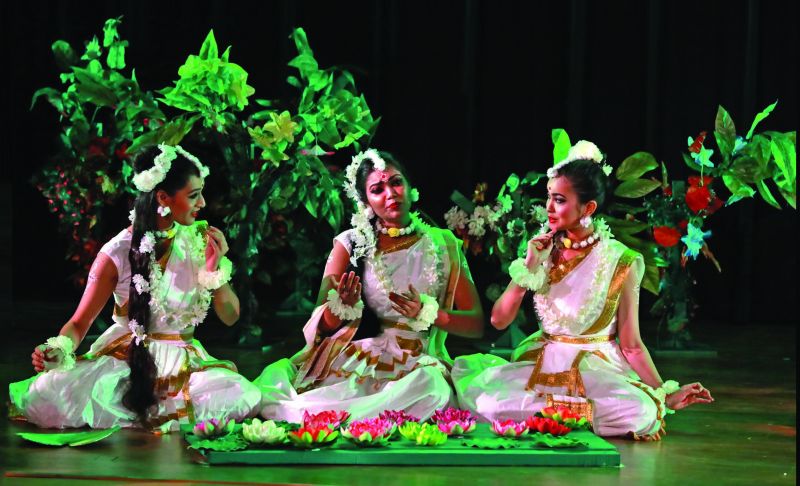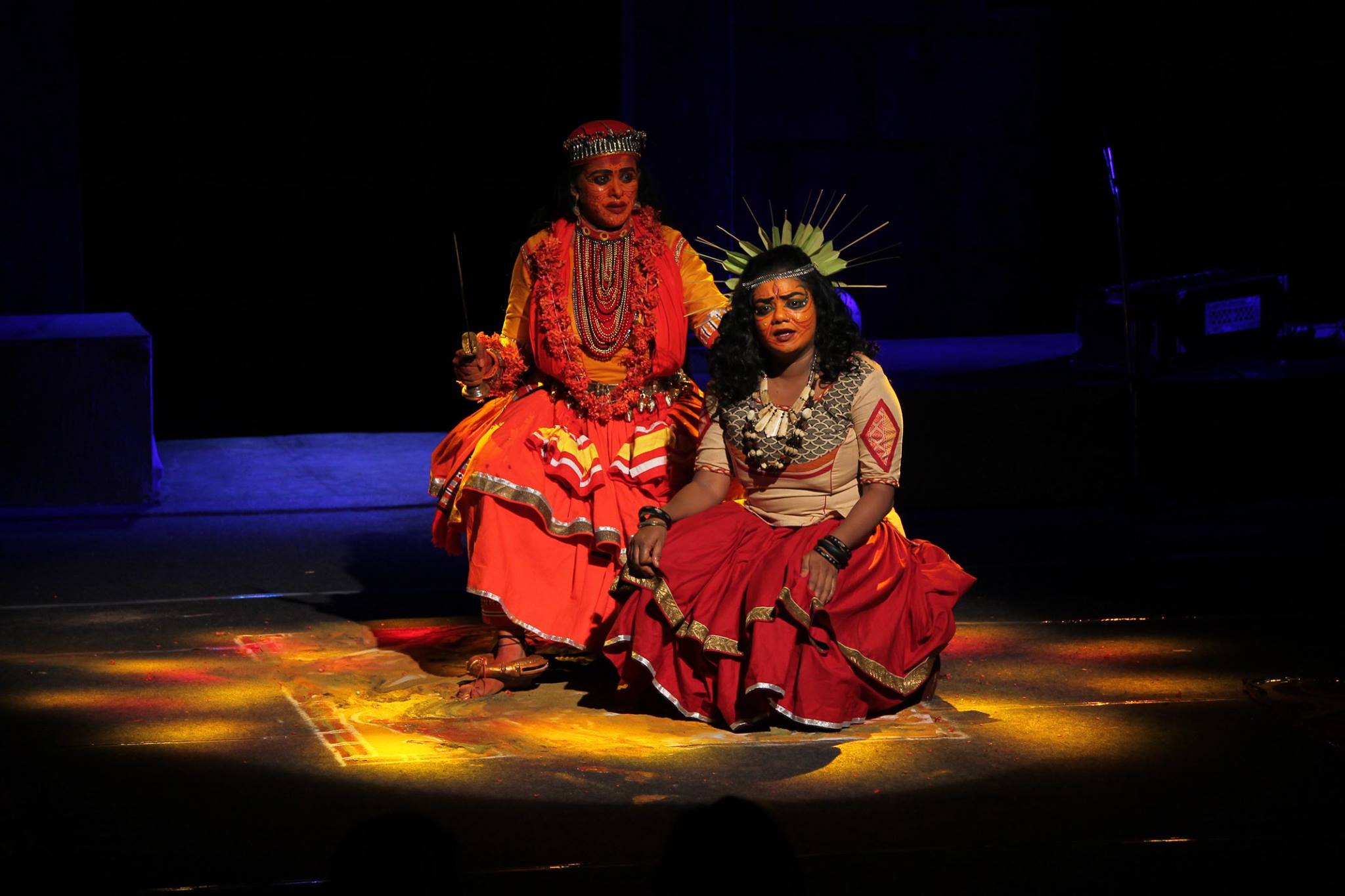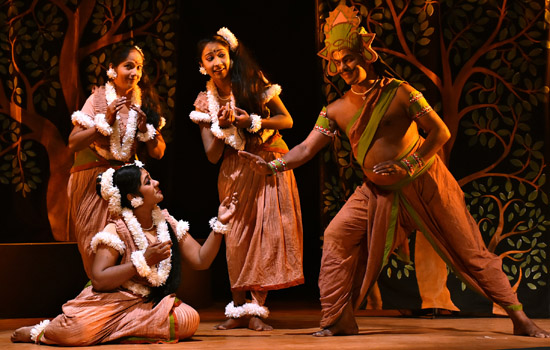Aharya Abhinaya
Aharya Abhinaya is communication through all the external elements such as make-up, costume, ornaments and accessories like weapons, shields, masks, etc. It is classified into four groups:
Pusth
(Model work, stage props and sets)
Pusth or models are required as stage property or occasionally as part of scenery. They can be effected in three different ways.
Sandhima :The desired form of a thing may be made by joining together leaves or barks of trees, pieces of bamboo, skins, cloth, etc.
Vyajima: Objects contrived and operated by some mechanical device, like pulling a string.
Vestita: A model prepared by wrapping, overlain by layers of wax, lac


Alankar
(Ornaments, decoration)
It is effected with the use of flowers and garlands, ornaments and jewelry, and appropriate garments.
The Natyashastra speaks of varied floral patterns that could be made: flowers or garlands.
Varied ornaments are used to play respective parts: earrings, necklaces, girdles,
Garments and Hairstyles must be used to highlight different identities. For example: to play heavenly women, hair must be piled on head with pearls. In the case of women of gods: green garments and accessories, lapis lazuli, jewels
Ang Rachana
(Cosmetic Body Painting, Make up)
The general direction for make-up is that it should be consistent with the country, social caste and age of character to be acted.
Special colours are used, for specific characters:
Kings: red like lotus, yellowish-red, blue;
Gods like those of Sun, Wind: shining yellow or gold
Crooked diseased and those in penance: dark;
Sages: generally plum-colored; but variations may be used for a purpose;


Sanjeev
(Representation of fauna)
The life-like representation of birds, animals, and inanimate objects on stage is called Sanjeev. Masks can be used for this purpose.
Additionally peacocks, swans etc. may be represented by dance gestures and movements, and animals by appropriate gait and body movements,
